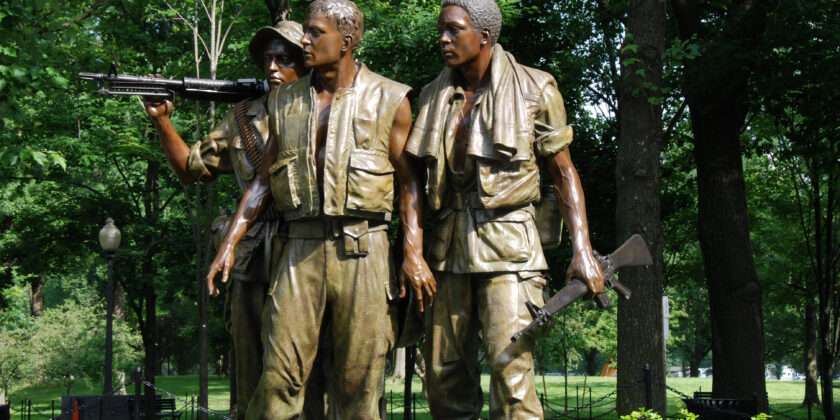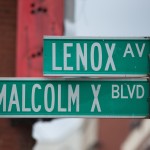Eleanor Roosevelt once said, “You gain strength, courage, and confidence by every experience in which you really stop to look fear in the face. You are able to say to yourself; I lived through this horror. I can take the next thing that comes along.” The African-American Youth of the 1960’s and early 1970’s certainly learned the meaning of Mrs. Roosevelt’s words.
Jay Harold found many articles documenting the Vietnam War. The University of Illinois’s English Department had a concise summary of the Black Soldier’s Role in the Vietnam War. John Sibley Butler‘s outline of the serious problems African-American Soldiers encountered and what the military did to correct the problems is as follows:
The Vietnam War saw the highest proportion of blacks ever to serve in an American war. During the height of the U.S. involvement, 1965-69, blacks, who formed 11 percent of the American population, made up 12.6 percent of the soldiers in Vietnam. The majority of these were in the infantry, and although authorities differ on the figures, the percentage of black combat fatalities in that period was a staggering 14.9 percent, a proportion that subsequently declined. Volunteers and draftees included many frustrated blacks whose impatience with the war and the delays in racial progress in America led to race riots on a number of ships and military bases, beginning in 1968, and the services’ response in creating interracial councils and racial sensitivity training.
The participation of Americans of African descent in the U.S. military has a long and distinguished history. But although African Americans have participated in all American wars, they have sometimes faced almost as bitter a hostility from their fellow Americans as from the enemy. Nevertheless, particularly since the 1970s, the U.S. military has made a serious effort at racial integration, and while much remains to be done, the military has achieved a degree of success in this area that surpasses most civilian institutions.
Dr. Butler is a decorated Vietnam Veteran and speaks from personal knowledge.
Sending Black Youth to Vietnam to Enhance Their Opportunities
Jay Harold learned of Project 100,000 while during research for this post. The Encyclopedia of the Vietnam War: A Political, Social, and Military History is one of the best books available detailing the complex tale of the Vietnam War. David Coffey provided information to the Encyclopedia of the Vietnam War. David Coffey’s assessment of “Project 100,000,” a Great Society program launched in 1966, attempted to enhance the opportunities of underprivileged youths from poverty-stricken urban areas by offering more lenient military entrance requirements. It largely failed. Although more than 350,000 men enlisted under Project 100,000 during the remainder of the war, 41 percent were African-American, and 40 percent drew combat assignments. Casualty rates among these soldiers were twice those of other entry categories. Few Project 100,000 inductees received training that would aid their military advancement or create better opportunities for civilian life.
African Americans often did supply a disproportionate number of combat troops, a high percentage of whom had voluntarily enlisted. Although they made up less than 10 percent of American men in arms and about 13 percent of the U.S. population between 1961 and 1966, they accounted for almost 20 percent of all combat-related deaths in Vietnam during that period. In 1965 alone African Americans represented almost one-fourth of the Army’s killed in action. In 1968 African-Americans, who made up roughly 12 percent of Army and Marine total strengths, frequently contributed half the men in front-line combat units, especially in rifle squads and fire teams. Under heavy criticism, Army and Marine commanders worked to lessen black casualties after 1966, and by the end of the conflict, African American combat deaths amounted to approximately 12 percent—more in line with national population figures. Final casualty estimates do not support the assertion that African Americans suffered disproportionate losses in Vietnam, but this in no way diminishes the fact that they bore a heavy share of the fighting burden, especially early in the conflict.
Jay Harold would like to thank Drs. Butler and Coffey for enlightening future generations about the difficult situation the African-American Soldier encountered during the Vietnam War.
Play the free “Slow Roll Through Civil Rights” Game found on the Jay Harold website. Enjoyed this post? Share it and read more here.








